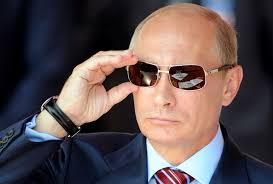 Now that Vladimir Putin has dispensed with the formalities of reclaiming presidential authority, Kremlinologists can focus on the more substantive question of how Russia’s paramount leader intends to define his third term. In particular, many are wondering how he will proceed with his pet project -- the creation of a Eurasian Union.
Now that Vladimir Putin has dispensed with the formalities of reclaiming presidential authority, Kremlinologists can focus on the more substantive question of how Russia’s paramount leader intends to define his third term. In particular, many are wondering how he will proceed with his pet project -- the creation of a Eurasian Union.
Russia-led Eurasian integration is perhaps the last “big idea” in Putin’s ideological arsenal that he can draw on to prop up its eroding legitimacy. Even so, the Russian blueprint for integrating post-Soviet Eurasia seems now less feasible than ever before.
The protests of the past few months in Russia show that the political and economic system developed by Putin – authoritarian in nature and wrapped in a veneer of democracy – is suffering from a crisis of confidence. Open-minded Russians, especially moderately affluent members of the middle class in Moscow and other cities, want a genuine say in the political process. Meanwhile, the ideological clichés and images used in the past by the Putin administration to rally supporters – slogans like “order and stability vs. the chaos of the 1990s,” “Russia as the energy super power,” and “resurgent Russia gets off its knees” – have lost much of their luster.
The concept of regional hegemony, in the form of a Eurasian economic union, would seem just the tonic to reinvigorate a jaded population. And from a geopolitical viewpoint, Putin’s Kremlin needs to join forces with formerly Soviet republics in order to be better positioned to economically compete with the United States, European Union and China.
The idea of an economic union has particular appeal for Putinists, as it contains the potential to “right the wrongs” of the Soviet collapse in 1991, placing Eurasia’s peoples back on track to fulfill their “historical destiny.” It is noteworthy that Putin’s Eurasian vision was first unveiled in his programmatic article headlined “A New Integration Project for Eurasia: The Future Starts Today,” published in the Izvestia daily last October.
Re-integrating the former “Soviet Eurasia” under Moscow’s leadership may seem simple in Putin’s concept paper, but reality is far more complex. Several powerful constraints will hinder the Kremlin’s ability to maneuver.
Some Russian policymakers constantly invoke the EU template. Yet, the experience of European integration is hardly relevant for post-Soviet lands, where Russia dwarfs all other potential partners. Given its economic potential and military might, Russia would be a “natural leader” of any union. At the same time, Russia’s outsized presence creates a perception problem. Other, smaller potential members would understandably be wary of an economic union becoming a vehicle for the reduction of their political sovereignty at the Kremlin’s expense. Russian leaders occasionally feed such concerns by evoking images of Russia as a benevolent hegemon.
Of course, even the most inexperienced political scientist knows that benevolence is not a word in the Kremlin’s political lexicon.
The second constraint stems from the very nature of the socio-political systems in Russia and other would-be members of an economic union. Such systems tend to prioritize the preservation of political power over the general well-being of the population. Supporting authoritarian-style systems in what Russia’s policy elite sees as its geopolitical sphere of influence is perceived as a sine qua non for this elite’s ultimate long-term survival.
Ironically, it is precisely Moscow’s preference to prop up post-Soviet authoritarian rulers that puts a brake on any potential integration process because authoritarian power is seen as indivisible in the former Soviet sphere, and not transferable to a supra-national body. This conundrum is perhaps best illustrated by Russia’s prickly relationship with Belarus: the two countries are technically unified, but hardly interact in a unified fashion.
Ultimately, Putin’s hopes for a Eurasian Union are doomed simply because Russia appears to be unable to prevent the erosion of its economic position in the post-Soviet space. Russia’s geopolitical competitors have managed to dramatically increase their strategic and economic footprints in the region. Most importantly, Russia seems to have lost its stranglehold over Turkmenistan’s vast gas reserves, with China increasingly becoming Ashgabat’s principal trading partner.
Lately Russia has been seeking to cast itself as a potential “norm-maker,” pretending to act as a counterweight to the EU. However, Kremlin ideologists never spell out in what sense Russia’s “specific” set of values differs from Europe’s. So far, Russia has failed to present an alternative socio-political model that could be attractive to societies in post-Soviet lands.
Putin’s Eurasianist vision is an ideology that is deficient in practical ideas. Thus, as it proceeds with its Eurasian union plans, the Kremlin stands a good chance of being consumed by what might be called Tsar Paul complex. Students of Russian history might recall that Tsar Paul in the late 18th became fixated with the idea of establishing a Russian naval presence in the Mediterranean Sea. The idea back then had its strategic merits, but, as experience showed, Paul and his dream were completely divorced from reality.
Eurasianet.Org, Mar 16, 2018




